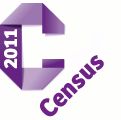How to count the fish in your pond – and how the census does the same with people
The connection may not be immediately obvious, but the 2011 Census has a direct link with fishing.
Trout, Catfish and Roach play their part in checking how comprehensive the coverage of the next year’s census will be. The census’s success in reaching all pockets of the community will be assessed using the same techniques as counting fish in a pond.
Pete Benton, census deputy director, has written the beginner’s guide to census population estimates based on the process. A keen fisherman himself, he struck on the idea of using a fishing analogy because he: “needed a simple and effective way to explain how census estimates are checked.”
It works like this. Go fish (with easy numbers for maths sake). You catch 100 trout one day, tag them and put them back. The next day you catch 50, and count how many have tags. If half of the trout have a tag, you know you caught about half the fish on day one – so there are about 200 fish in your pond. (See below for more details).
 Obviously the census is not counting fish, it is counting people, but the principle is the same (although the census doesn’t have to tag people as the census questionnaires ask for names, date of birth and addresses).
Obviously the census is not counting fish, it is counting people, but the principle is the same (although the census doesn’t have to tag people as the census questionnaires ask for names, date of birth and addresses).
After the census on 27 March, the Office for National Statistics (ONS) works out how many people returned their questionnaires – and the number who may have slipped through the net (for example, where a house has been converted into flats and not enough questionnaires were sent out in the first place). ONS rechecks the whole population, across one per cent of postcodes in a Census Coverage Survey. So the census is day one fishing, and day two is the coverage survey.
“The census is vitally important to communities,” says Pete. “It tells us how many people live where and the types of people they are (young, old, married, single): their characteristics. When we have accurate statistics about communities, it means that local decisions, like where to build new play parks, where bus stops are needed and even where to plan car parking spaces, are based on accurate information.
“Using fish as an analogy opens up statistical equations. The word statistics can be off-putting to some people, but with the illustration of Trout, Catfish and Roach, everyone can follow the equation to its logical end. It’s proved very popular,” Pete notes.
“When we know roughly how many people were missed, in a local area, we can work out a population estimate that reflects the truth. That’s vitally important to local authorities as, although they never get to see questionnaires, the numbers that the census produces directly affect the amount of funding that they receive from central government.”
Using ponds helps people to visualise areas, and using different types of fish helps understanding of population types and their characteristics.
A confidential census questionnaire will be sent to every household next March and will ask a variety of questions – none of them relating to fish. Unless you are a professional fisherman of course and mark that down as your employment.
In 2001, 15,500 plus people in England and Wales categorised themselves as working within the fishing and agricultural trades. According to the 2001 results, one in every 124 people in the Isles of Scilly was thus employed, compared to, unsurprisingly, one in every 47,000 in Tower Hamlets. (These figures relate to people in employment aged 16-74. Source: Office for National Statistics)
To find out more about the 2011 Census, visit: www.census.gov.uk.
Want to know more about counting fish in your pond? Download Trout, Catfish and Roach: the beginner’s guide to census population estimates, from www.census.gov.uk/census-coverage-survey








